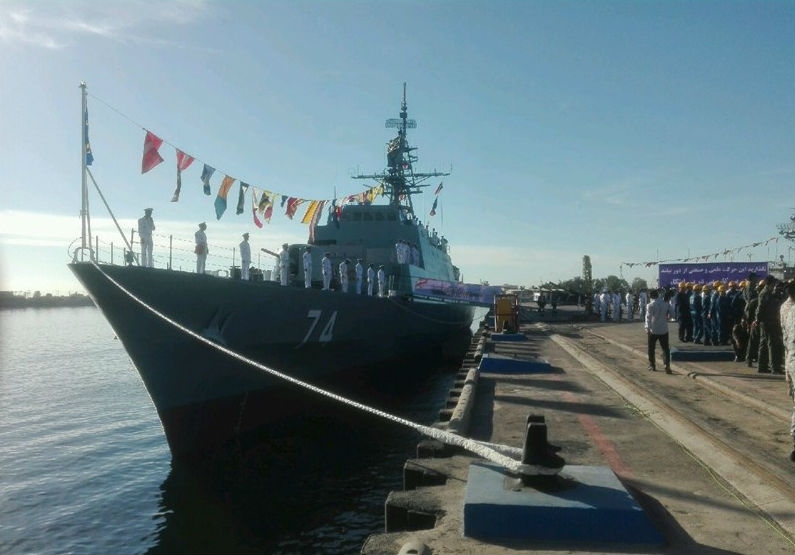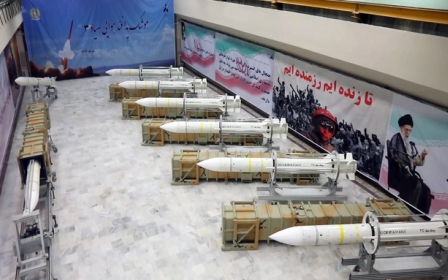Iran navy launches stealth warship in Gulf amid plans for Venezuela visit

Iran's navy has launched a domestically made destroyer, which state media said has radar-evading stealth properties, as tensions rise with the United States.
In a ceremony carried live on state television on Saturday, the Sahand destroyer, which can sustain voyages lasting five months without resupply, joined Iran's regular navy at a base in Bandar Abbas on the Gulf.
The Sahand has a flight deck for helicopters, torpedo launchers, anti-aircraft and anti-ship guns, surface-to-air missiles and electronic warfare capabilities, state television reported.
"This vessel is the result of daring and creative design relying on the local technical knowledge of the Iranian Navy ... and has been built with stealth capabilities," Rear-Admiral Alireza Sheikhi, head of the navy shipyards that built the destroyer, told the state news agency IRNA.
A naval commander said Sahand may be among warships that Iran plans to send on a mission to Venezuela soon, the Reuters news agency reported.
"Among our plans in the near future is to send two or three vessels with special helicopters to Venezuela in South America on a mission that could last five months," Iran's deputy navy commander, Rear-Admiral Touraj Hassani Moqaddam, told the semi-official news agency Mehr.
Naval bases
US President Donald Trump pulled out of an international agreement on Iran's nuclear programme in May and reimposed sanctions on Tehran.
He said the deal was flawed because it did not include curbs on Iran's development of ballistic missiles or its support for proxies in Syria, Yemen, Lebanon and Iraq.
The US has said its goal is to reduce Iran's oil exports to zero.
Senior Iranian officials have said that if Iran is not allowed to export oil no other countries will be allowed to export oil through the Strait of Hormuz at the mouth of the Gulf.
Iran launched its first locally made destroyer in 2010 as part of a programme to revamp its navy equipment, which dates from before the 1979 Islamic revolution and is mostly US-made.
Tehran has developed a large domestic arms industry in the face of international sanctions and embargoes that have barred it from importing many weapons.
Supreme Leader Ayatollah Ali Khamenei said last week in a meeting with Iranian navy commanders that Iran should increase its military capability and readiness to ward off enemies.
Iran's navy has extended its reach in recent years, launching vessels in the Indian Ocean and the Gulf of Aden to protect Iranian ships from Somali pirates operating in the area.
The chief of staff of the Iranian armed forces said in 2016 that Iran may seek to set up naval bases in Yemen or Syria in the future, raising the prospect of distant footholds perhaps being more valuable militarily to Tehran than nuclear technology.
Middle East Eye propose une couverture et une analyse indépendantes et incomparables du Moyen-Orient, de l’Afrique du Nord et d’autres régions du monde. Pour en savoir plus sur la reprise de ce contenu et les frais qui s’appliquent, veuillez remplir ce formulaire [en anglais]. Pour en savoir plus sur MEE, cliquez ici [en anglais].




